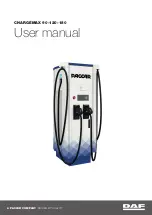
Do not continue driving without run-flat
tires
Do not continue driving if the vehicle is not
equipped with run-flat tires; continued driving
may result in serious accidents.◀
When a flat tire is indicated, DSC Dynamic Sta‐
bility Control is switched on if necessary.
Actions in the event of a flat tire
Normal tires
1.
Identify the damaged tire.
Do this by checking the air pressure in all
four tires.
If the tire inflation pressure in all four tires is
correct, the Tire Pressure Monitor may not
have been initialized. In this case, initialize
the system.
If an identification is not possible, please
contact the service center.
2.
Rectify the flat tire.
The use of tire sealant can damage the TPM
electronics. In this case, have the electron‐
ics checked at the next opportunity and have
them replaced if necessary.
Run-flat tires
You can continue driving with a damaged tire at
speeds up to 50 mph/80 km/h.
Continued driving with a flat tire
If continuing to drive with a damaged tire:
1.
Avoid sudden braking and steering maneu‐
vers.
2.
Do not exceed a speed of 50 mph/80 km/h.
3.
Check the air pressure in all four tires at the
next opportunity.
If the tire inflation pressure in all four tires is
correct, the Tire Pressure Monitor may not
have been initialized. In this case, initialize
the system.
Possible driving distance with complete loss of
tire inflation pressure:
The possible driving distance after a loss of tire
inflation pressure depends on the cargo load
and the driving style and conditions.
For a vehicle containing an average load, the
possible driving distance is approx. 50 miles/
80 km.
When the vehicle is driven with a damaged tire,
its handling characteristics change, e.g., re‐
duced lane stability during braking, a longer
braking distance, and altered self-steering
properties. Adjust your driving style accord‐
ingly. Avoid abrupt steering maneuvers or driv‐
ing over obstacles, e. g., curbs, potholes, etc.
Because the possible driving distance depends
on how the vehicle is used during the trip, the
actual distance may be smaller or greater de‐
pending on the driving speed, road conditions,
external temperature, cargo load, etc.
Continued driving with a flat tire
Drive moderately and do not exceed a
speed of 50 mph/80 km/h.
A loss of tire inflation pressure results in a
change in the handling characteristics, e.g., re‐
duced lane stability during braking, a longer
braking distance and altered self-steering prop‐
erties.◀
Final tire failure
Vibrations or loud noises while driving can
indicate the final failure of the tire. Reduce speed
and stop; otherwise, pieces of the tire could
come loose and cause an accident. Do not con‐
tinue driving, and contact your service center.◀
Malfunction
The small warning lamp flashes in yel‐
low and then lights up continuously;
the larger warning lamp comes on in
yellow. No flat tire can be detected.
Display in the following situations:
Seite 79
Safety
Controls
79
Online Edition for Part no. 01 40 2 609 184 - 09 11 500
Summary of Contents for Z4 sDrive28i
Page 2: ......
Page 9: ...Notes 9 Online Edition for Part no 01 40 2 609 184 09 11 500 ...
Page 10: ...Online Edition for Part no 01 40 2 609 184 09 11 500 ...
Page 17: ...Cockpit At a glance 17 Online Edition for Part no 01 40 2 609 184 09 11 500 ...
Page 18: ...Online Edition for Part no 01 40 2 609 184 09 11 500 ...
Page 106: ...Online Edition for Part no 01 40 2 609 184 09 11 500 ...
Page 114: ...Online Edition for Part no 01 40 2 609 184 09 11 500 ...
Page 131: ...Professional Radio Entertainment 131 Online Edition for Part no 01 40 2 609 184 09 11 500 ...
Page 132: ...Online Edition for Part no 01 40 2 609 184 09 11 500 ...
Page 149: ...ConnectedDrive Communication 149 Online Edition for Part no 01 40 2 609 184 09 11 500 ...
Page 150: ...Online Edition for Part no 01 40 2 609 184 09 11 500 ...
Page 200: ...Online Edition for Part no 01 40 2 609 184 09 11 500 ...
Page 207: ...Technical data Reference 207 Online Edition for Part no 01 40 2 609 184 09 11 500 ...
Page 219: ......
















































